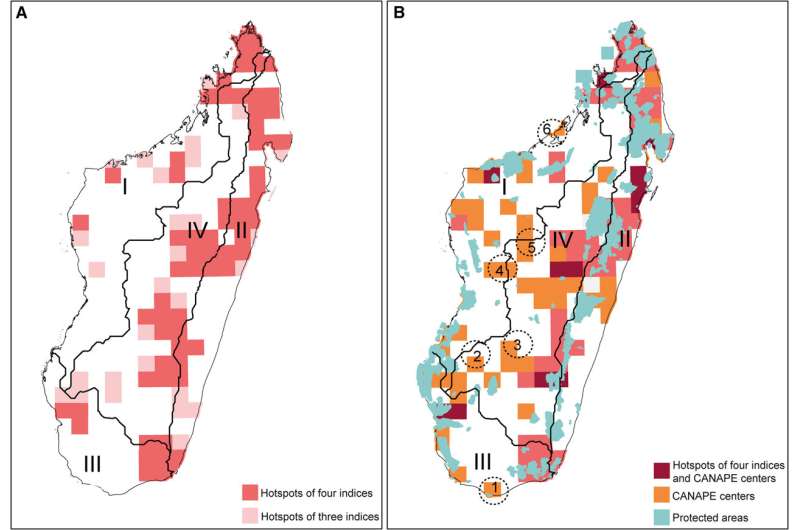This article has been reviewed according to Science X's editorial process and policies. Editors have highlighted the following attributes while ensuring the content's credibility:
fact-checked
peer-reviewed publication
trusted source
proofread
Scientists identify biodiversity conservation gaps in Madagascar

Despite the importance of biodiversity and the urgency to conserve it, assessing what aspect of biodiversity requires the highest priority has proven complex, especially when conservation resources are limited. A new study published in Current Biology sheds light on this question.
Prof. Chen Zhiduan's team from the Institute of Botany of the Chinese Academy of Sciences (IBCAS) and international collaborators have identified the spatial heterogeneity of biodiversity hotspots and endemism centers. With this information, they have identified the conservation priority for vascular plants in Madagascar.
Madagascar is the fourth largest island in the world and one of the most important global biodiversity hotspots. It is well known for its high level of endemic diversity, which is largely attributed to its complex geological history, geographic location, and biogeographic connections with Africa, India, Southeast Asia, and northern Australia.
The researchers generated a new dated tree of life for the island, including an unprecedented sampling of 3,950 species (33% of all known species) and 1,621 genera (93% of all known genera) of Malagasy vascular plants. They found that most of the extant endemic genera (69%) in Madagascar originated relatively recently during the Neogene–Quaternary.
Integrating phylogenetic and geographic distribution data, the researchers revealed an uneven distribution of taxon richness and phylogenetic diversity, with hotspots concentrated in the northern, eastern, and southeastern humid forests.
They also evaluated endemic centers, which feature both taxonomic endemism and phylogenetic endemism. The analyses consistently supported a high concentration of paleoendemism in the humid eastern and central region, while neoendemism was found in the dry and spiny forests of western and southern Madagascar.
Finally, the researchers identified conservation gaps in oft-ignored arid and semi-arid regions by overlaying biodiversity hotspots and centers of endemism with protected areas. These conservation gaps provide additional evidence to support the conservation of biodiversity in Madagascar in the face of climate change and increased anthropogenic pressures.
More information: Wyckliffe Omondi Omollo et al, Spatial heterogeneity of neo- and paleo-endemism for plants in Madagascar, Current Biology (2024). DOI: 10.1016/j.cub.2024.02.023
Journal information: Current Biology
Provided by Chinese Academy of Sciences




















